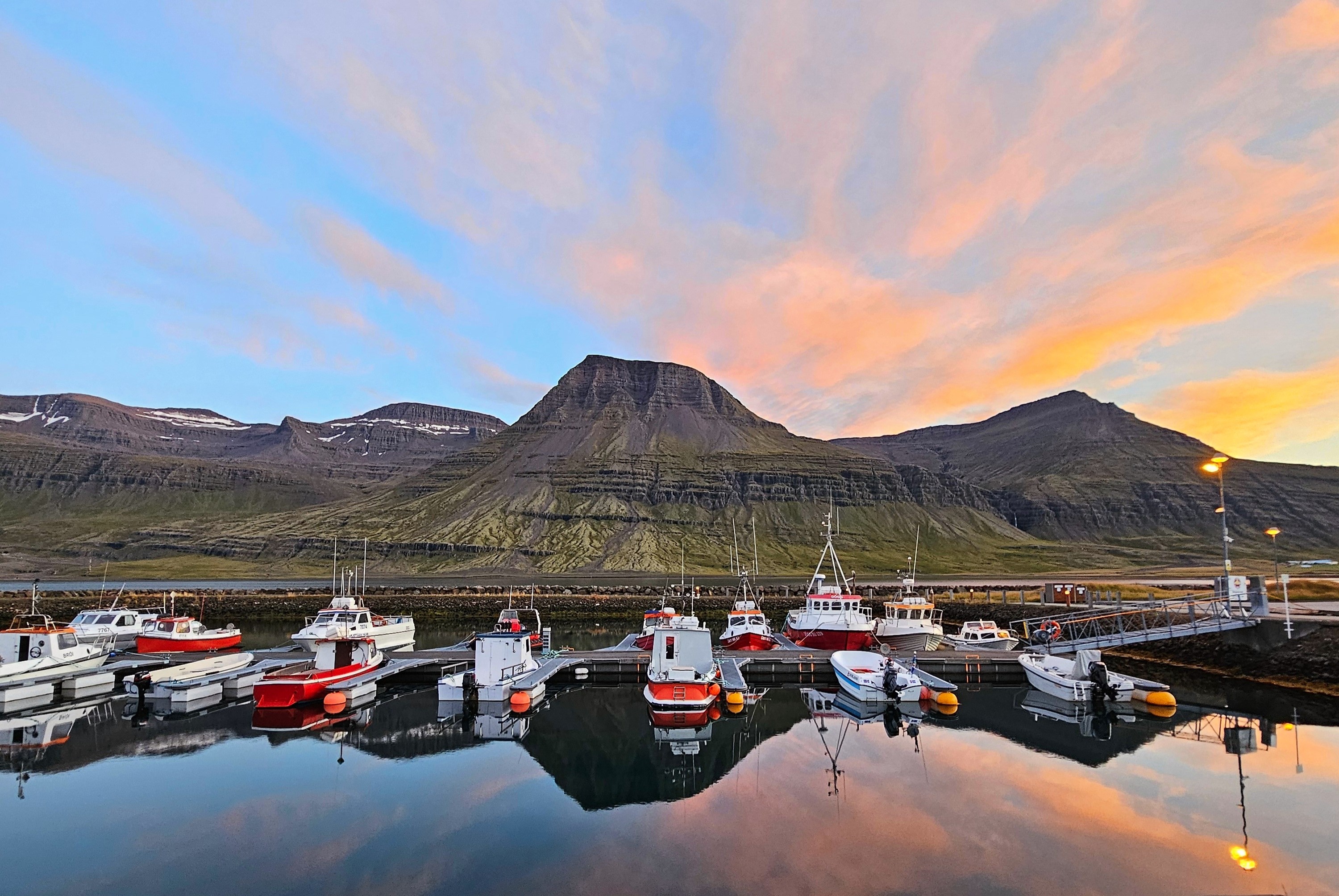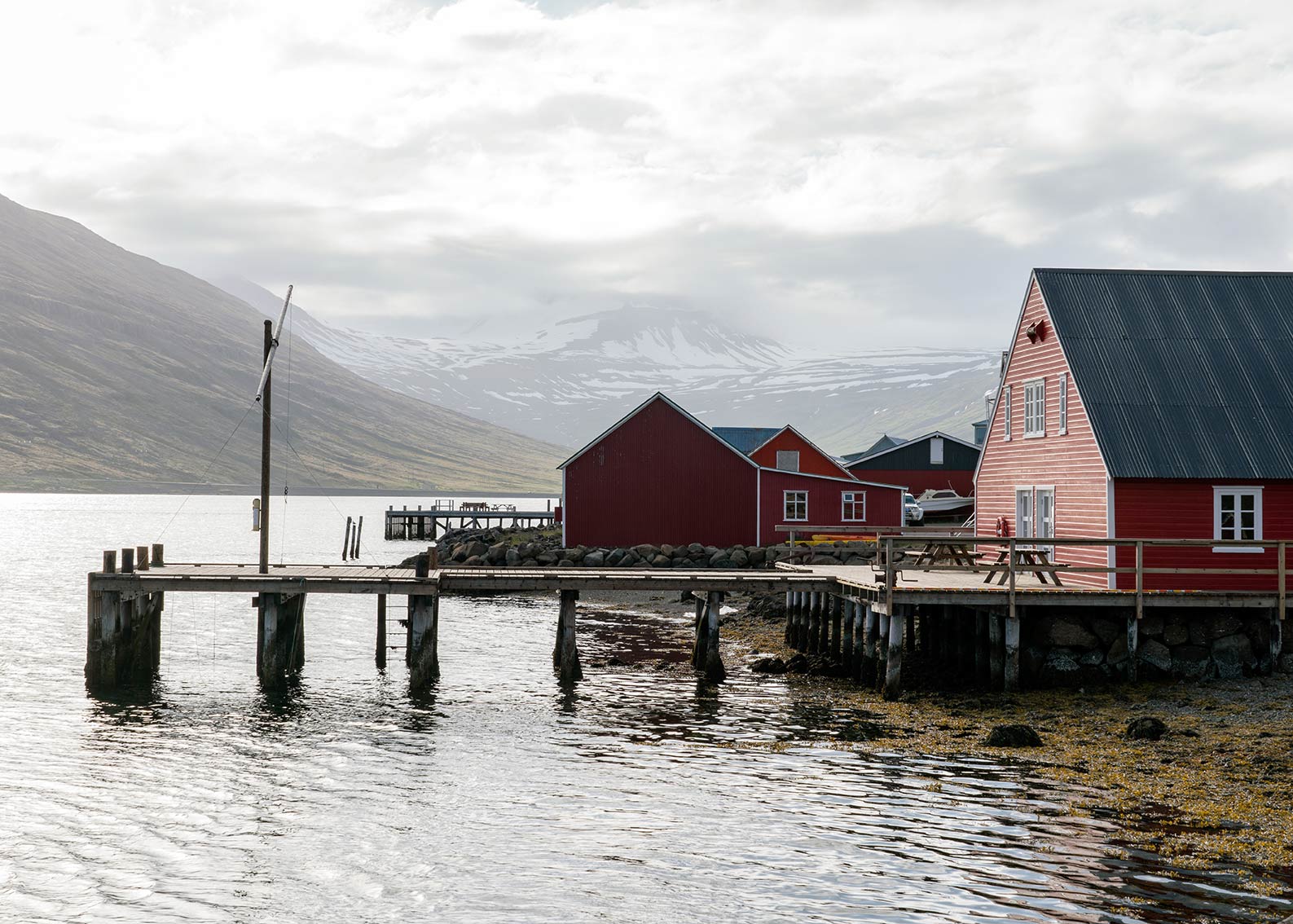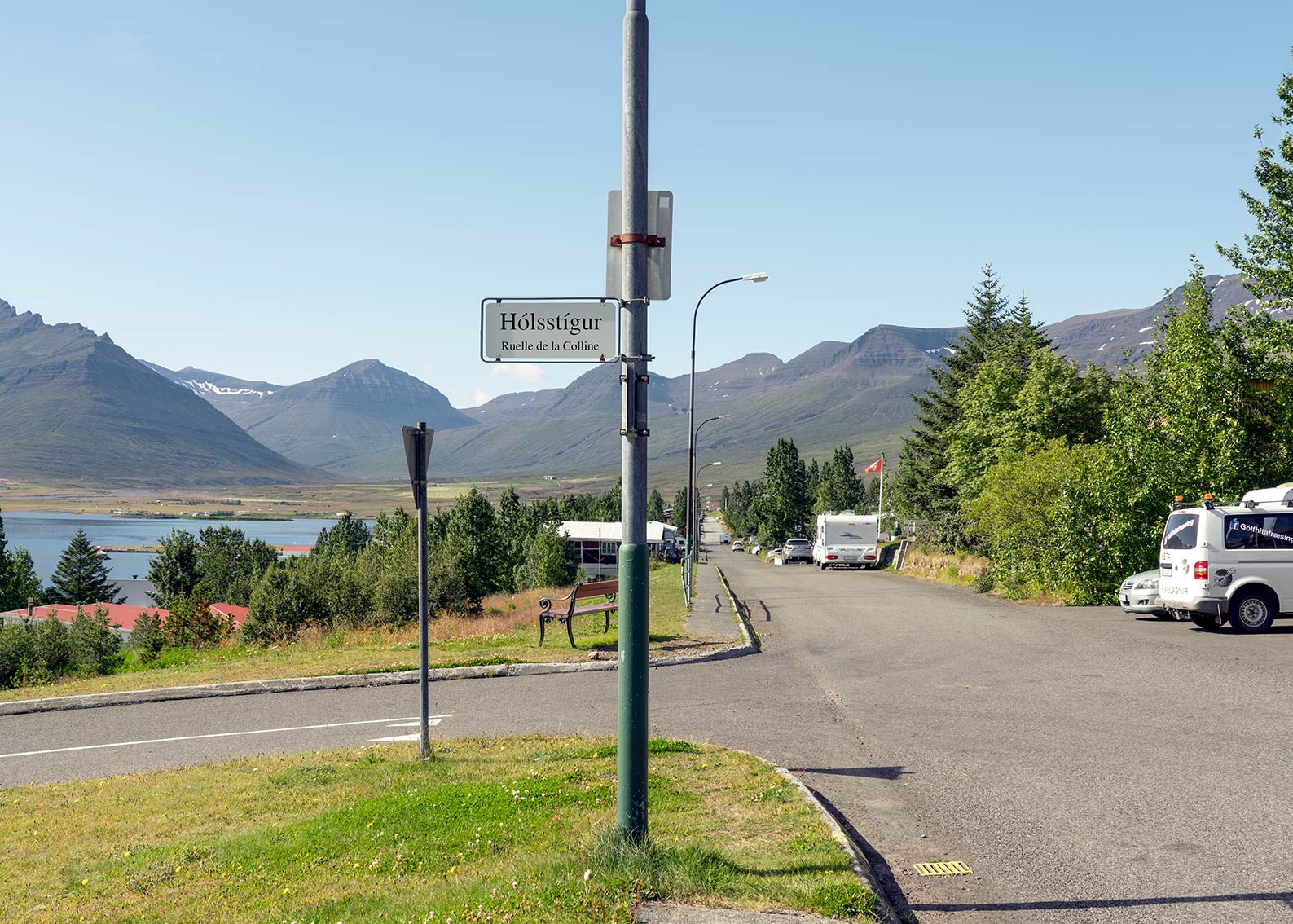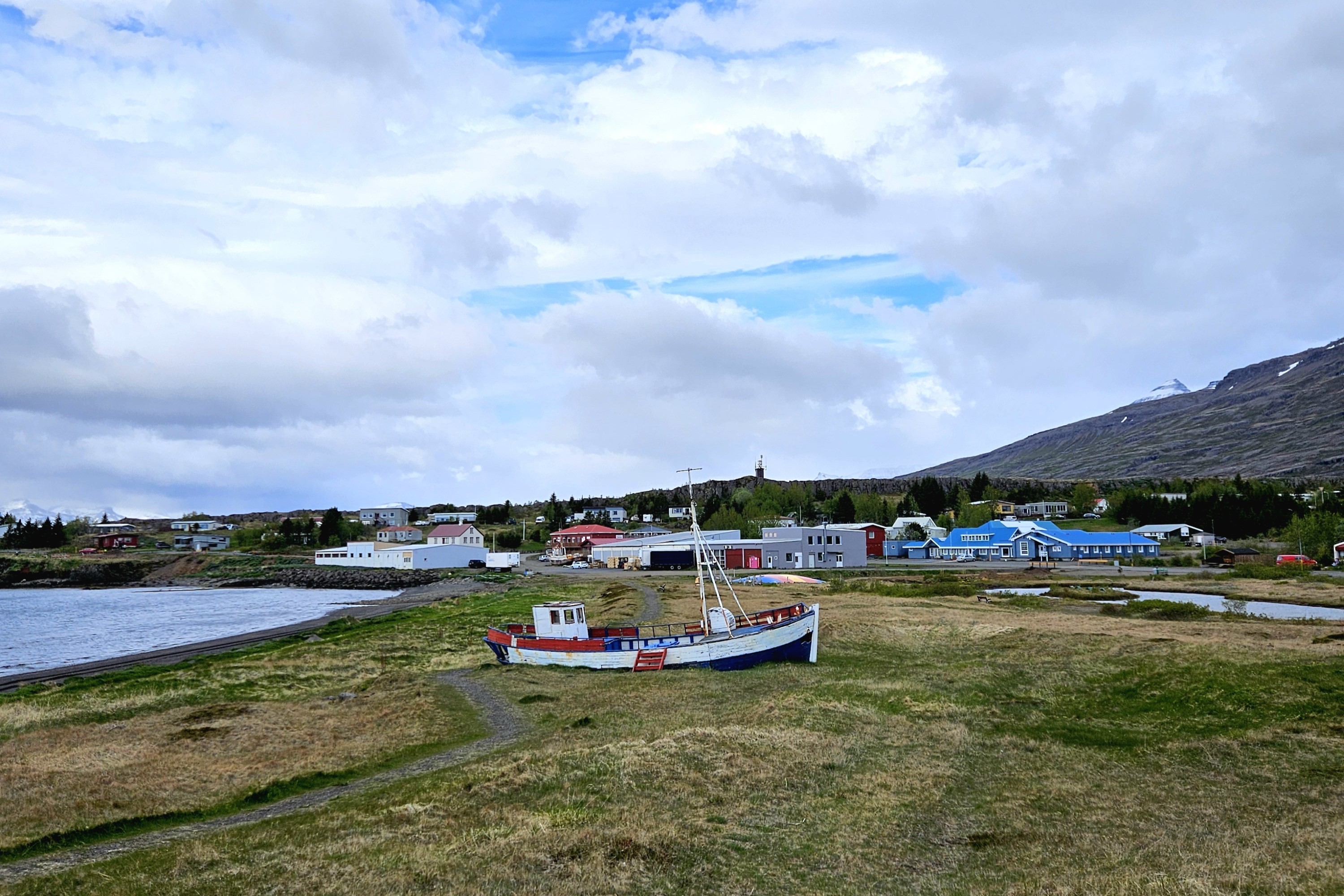Fjarðabyggð: A week of wonders across seven fjords
Fabulous fjords, from north to south
These seven communities are part of the municipality known as Fjarðabyggð, with a total population of around 5000 people.
Mjóifjörður
 Mjóifjörður. Photo: Gunnar Freyr Gunnarsson
Mjóifjörður. Photo: Gunnar Freyr Gunnarsson
In a country that specializes in unspoiled and out-of-the-way places, Mjóifjörður might just take the title of ‘most remote’. Its name translates as ‘Narrow Fjord’, and it’s an 18km-long inlet that is home to just one tiny village, Brekkuþorp. Today, only about 14 people live in Brekkuþorp year-round, and they are clearly people who relish some nature-induced solitude: the road into Mjóifjörður is breathtaking, but it’s open for only about four months of the year (depending on the weather). The rest of the year, Mjóifjörður is only accessible by scheduled boat from Norðfjörður.
Local checklist
- Top of the list: Enjoy the tranquility!
- Count the levels of the stunning Klifbrekkufossar waterfall as it cascades down the hillside.
- Make a photo stop at the rusty barge on the fjord shoreline.
- Road-trip along the north shore of the fjord, as far as you can, to end at Dalatangi
Reyðarfjörður
 Small boat harbour at Reyðarfjörður. Photo: Þóra Lind Helgadóttir.
Small boat harbour at Reyðarfjörður. Photo: Þóra Lind Helgadóttir.
At over 30km long, Reyðarfjörður is the longest and widest of Iceland’s Eastfjords. Norwegians once operated whaling stations along the fjord, and fishing was naturally a part of the area’s history. These days the Alcoa aluminum smelter is the main employer, making this the most industrial pocket of the east. But industry certainly doesn’t mean a lack of beauty. The town has outdoor activities that appeal to locals and visitors.
Local checklist
- Take a walk along the Búðará river to the waterfall Búðarárfoss.
- Get energized on a hike to picturesque Grænafell peak, a trail that ends with a lovely lake and a great view of the whole valley.
- Investigate surprising World War II stories at the Icelandic Wartime Museum.
- Enjoy a delicious snack from the local bakery.
Eskifjörður
 Sea houses at Eskifjörður. Photo: Jessica Auer.
Sea houses at Eskifjörður. Photo: Jessica Auer.
First impressions of Eskifjörður are impressive: the road leading to the town skirts around imposing Hólmatindur mountain, and the Hólmanes nature reserve offers a pit stop rich in birdlife and wide, wonderful views. A waterfall cascades down a hillside as the road reaches the town, and handsome old sea houses built on (and over) the fjord edge come into view. The community is as welcoming as the natural setting, with pride in the local fishing industry and the trading history of the town.
Local checklist
- Take a scenic walk and do a little birdwatching at Hólmanes nature reserve.
- Dig deeper into the town’s maritime history with a visit to the local museum and a walk among the handsome red sea houses.
- Continue the maritime theme with a fresh seafood meal at memorable Randulffssjóhus.
- Be surprised at Helgustaðanáma, named for the important quarry where Icelandic spar crystals were once mined.
- Hit the slopes above town at Oddsskarð ski area, a winter magnet that’s the gateway to the so-called ‘Austurland Alps’.
- Bed down in a cozy cottage at Mjóeyri, and enjoy its view-filled location and unique hot pot.
- Join a tour guided by Tanni Travel, local experts keen to show off the best of the region.
Neskaupstaður on Norðfjörður
 Neskaupstaður. Photo: Páll Guðmundsson.
Neskaupstaður. Photo: Páll Guðmundsson.
Head east, and then just keep heading east! As you emerge from the tunnel from Eskifjörður, Iceland’s easternmost town reveals itself, along with some killer views. Before the tunnel’s construction, Neskaupstaður was quite isolated, so the community is close-knit and local legends have grown strong. It’s the largest among the seven communities of Fjarðabyggd, with a population of around 1500.
Local checklist
- Visit the three-in-one local museum showcasing contemporary art and natural history.
- Explore the nature reserve full of walking trails and birdlife under the sheer cliff Nípa, plus a legend-filled cave, Páskahellir (Easter Cave), down by the shoreline.
- Take a memorable horse ride with local legends at Skorrahestar.
- Soak in the town swimming pool, a hub of local life.
- Enjoy a summertime alfresco meal with big views (and maybe a spot of whale-watching) at Beituskúrinn, the ‘Bait Shack’.
Fáskrúðsfjörður
 Fáskrúðsfjörður. Photo: Jessica Auer.
Fáskrúðsfjörður. Photo: Jessica Auer.
Fáskrúðsfjörður dishes up a Gallic surprise in the middle of the Eastfjords: a strong historical connection to France that today is showcased and celebrated. The village road signs are even in French! The fjord’s town is called Búðir, but everyone calls it Fáskrúðsfjörður. It became a trading post in 1880, and from the latter part of the 19th century until 1935 it was the main hub for French fishermen working off Iceland’s east coast.
Local checklist
- Investigate the rich French history here, courtesy of the award-winning French Museum which dives into unique local legends.
- Make a photo stop at the jetty behind the local hotel, where the views are superb.
- Admire (or climb) the distinctive rhyolite peak Sandfell (743 meters or 2437ft)
Stöðvarfjörður
 Stöðvarfjörður. Photo: Páll Guðmundsson.
Stöðvarfjörður. Photo: Páll Guðmundsson.
Stöðvarfjördur is the only Eastfjords town that the Ring Road travels directly through, and there are plenty of opportunities to stop and enjoy the unsung treasures of the location. The locals here sustain themselves with fishing, tourism and art, and as with many villages in the Icelandic countryside, there is a creativity that bubbles away – likely fueled, in part, by the spectacular surrounding nature. As with most of the Eastfjords, mountains loom over the coastline.
Local checklist
- Admire the dazzling local rocks and minerals on display at Petra’s Stone Collection, one of Austurland’s real gems.
- Learn more about the Viking Age at the archaeological site of Stöð, where remains of a 9th-century Viking longhouse has been uncovered.
- Browse souvenir-perfect arts and crafts created by locals, offered for sale in the summer market known as Salthússmarkaðurinn.
- Enjoy a blast of fresh air at the coastal rock formation called Saxa (The Grinder): a perforated cliff where the sea erupts into the air.
Breiðdalsvík
 Breiðdalsvík. Photo: Þóra Lind Helgadóttir.
Breiðdalsvík. Photo: Þóra Lind Helgadóttir.
Tiny Breiðdalsvík is a relatively young fishing village with some surprises, and plenty of small-town hospitality. It lies on the coast with great seascapes and black sand beaches, making fishing and boat tours popular from its old harbor. Some of the loveliest scenery lies inland from the town, in the spectacular valley of Breiðdalur (its name means ‘Wide Valley’). This is the longest and widest of the valleys in East Iceland, and it’s surrounded by majestic mountains rising to over 1000 meters on both sides. The impressive Breiðdalsá river, well known for salmon fishing, winds its way scenically across the valley basin to the sea.
Local checklist
- Drive into Breiðdalur valley for scenery and short walks.
- Have a drink at Beljandi, the local craft brewery (in fact named after a waterfall in Breiðdalur).
- Take a walk on the long, dramatic black beach north of town known as Meleyri.
- Stop for a peek inside the general store for some quirky 1950s vibes.
- Join a tour to hear local stories and discover secret places with Tinna Adventure.
Words: Carolyn Bain

